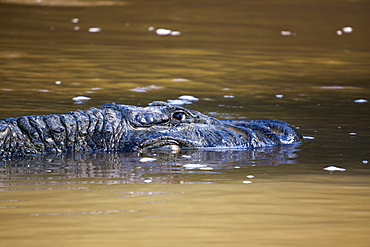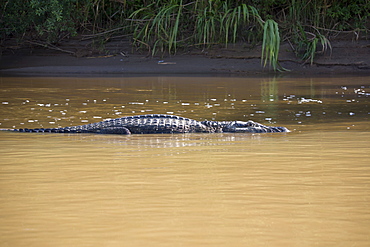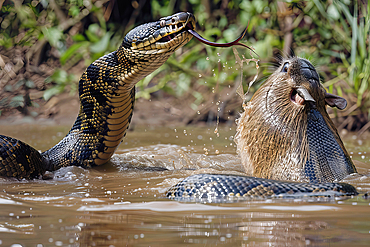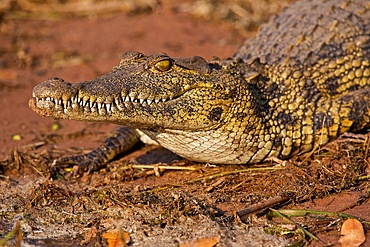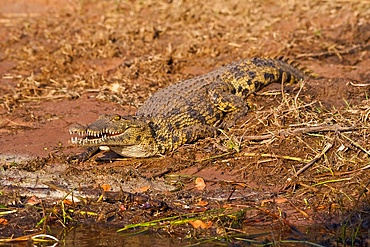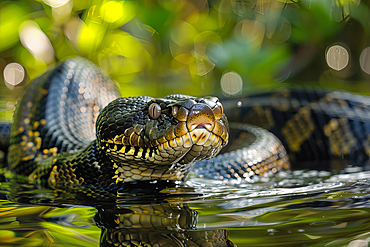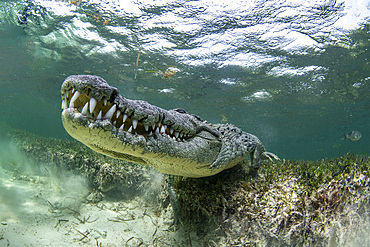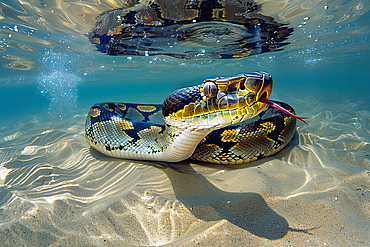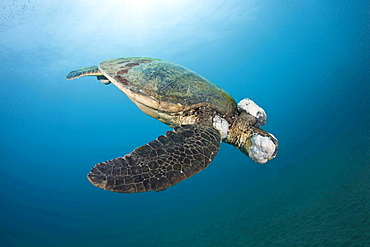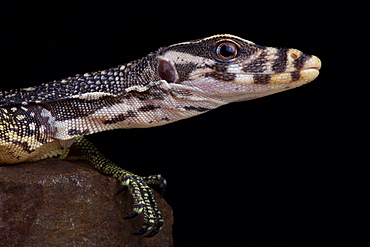Results
33 results found
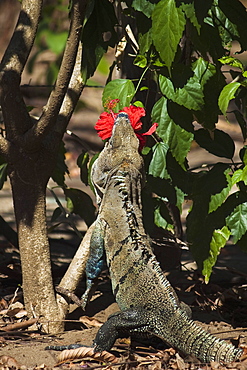
Large Black Ctenosaur or Iguana Negra eating red Hibiscus flower near Nosara, Nicoya Peninsula, Guanacaste Province, Costa Rica
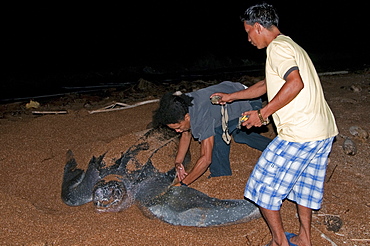
Applying a tag to a Leatherback turtle (Dermochelys coriacea) at its nesting site, Shell Beach, Guyana, South America
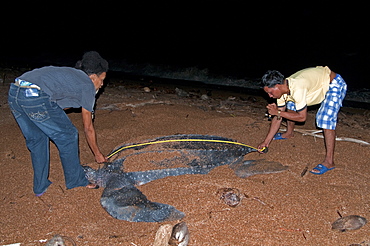
Researchers measuring a female Leatherback turtle (Dermochelys coriacea) at its nest site, Shell Beach, Guyana, South America
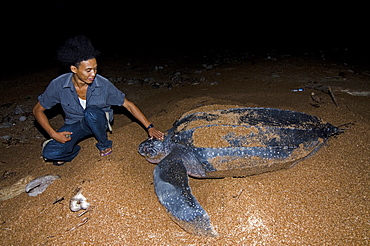
Turtle warden with nesting Leatherback turtle (Dermochelys coriacea), Shell Beach, Guyana, South America
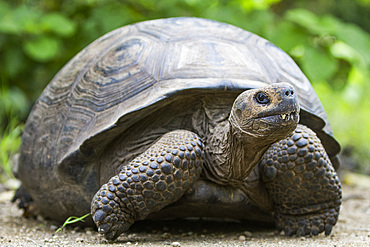
Wild Galapagos giant tortoise (Geochelone elephantopus) at Urbina Bay, Isabela Island, Galapagos Islands, UNESCO World Heritage Site, Ecuador, South America
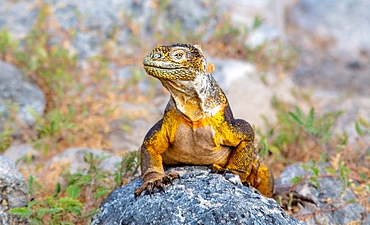
Galapagos Land Iguana (Conolophus subcristatus), large lizard can can grow to five feet long and live for 60 years, South Plaza island, Galapagos, UNESCO World Heritage Site, Ecuador, South America
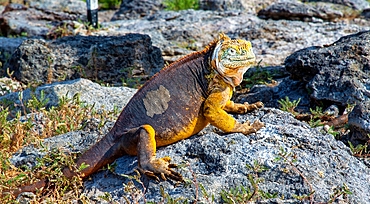
Galapagos Land Iguana (conolophus subcristatus), a large lizard species, that can grow up to five feet long and live 60 years, Galapagos, UNESCO World Heritage Site, Ecuador, South America

Galapagos Giant Tortoise (Chelonoidis chathamensis), can live for over 100 years, on San Cristobal island, Galapagos, UNESCO World Heritage Site, Ecuador, South America
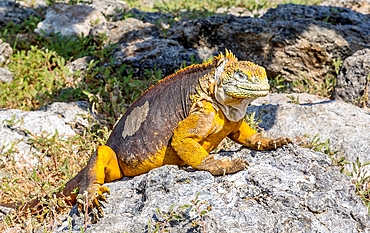
Galapagos Land Iguana (Conolophus subcristatus), large lizard can can grow to five feet long and live for 60 years, South Plaza island, Galapagos, UNESCO World Heritage Site, Ecuador, South America
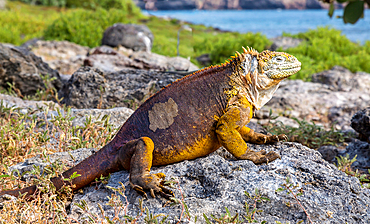
Galapagos Land Iguana (Conolophus subcristatus), large lizard can can grow to five feet long and live for 60 years, South Plaza island, Galapagos, UNESCO World Heritage Site, Ecuador, South America
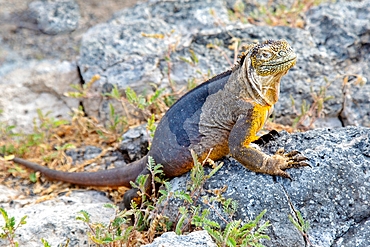
Galapagos Land Iguana (Conolophus subcristatus), large lizard can can grow to five feet long and live for 60 years, South Plaza island, Galapagos, UNESCO World Heritage Site, Ecuador, South America
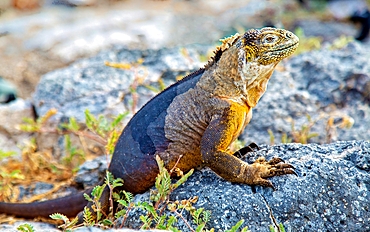
Galapagos Land Iguana (Conolophus subcristatus), large lizard can can grow to five feet long and live for 60 years, South Plaza island, Galapagos, UNESCO World Heritage Site, Ecuador, South America

Mugger crocodile (Crocodylus palustris) by the Senanayake Samudraya Lake, Gal Oya National Park, Sri Lanka, Indian subcontinent, South Asia
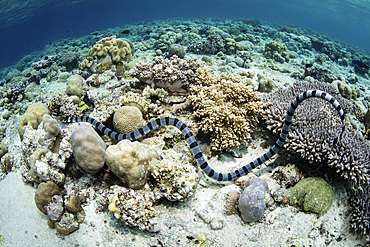
A large banded sea snake, Laticauda colubrina, sinuously swims over a beautiful reef in Wakatobi National Park, Indonesia.
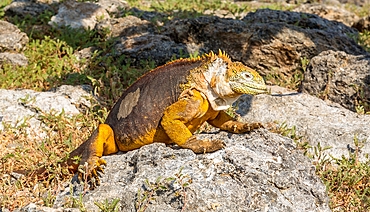
Galapagos Land Iguana (Conolophus subcristatus), large lizard can can grow to five feet long and live for 60 years, South Plaza island, Galapagos, UNESCO World Heritage Site, Ecuador, South America
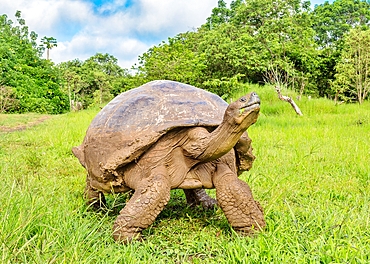
Galapagos Giant Tortoise (Chelonoidis chathamensis), can live for over one hundred years, Santa Cruz island, Galapagos, Ecuador, South America
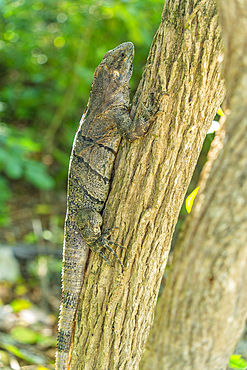
View of large iguana, Tulum, Quintana Roo, Caribbean Coast, Yucatan Peninsula, Riviera Maya, Mexico, North America
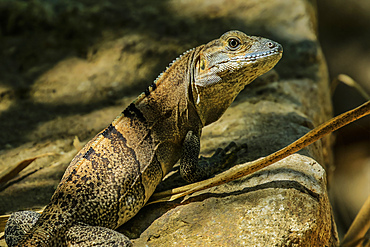
Ctenosaur (Black Spinytail Iguana) (Ctenosaura similis) a common large lizard, Nosara, Guanacaste Province, Costa Rica, Central America
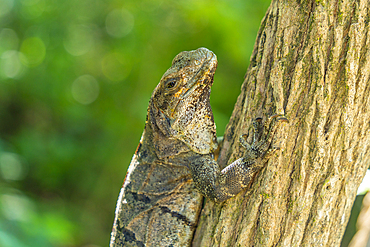
View of large iguana, Tulum, Quintana Roo, Caribbean Coast, Yucatan Peninsula, Riviera Maya, Mexico, North America
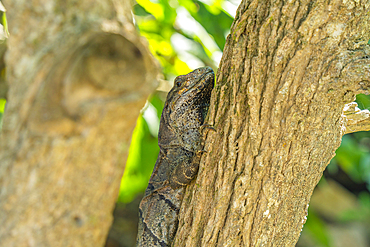
View of large iguana, Tulum, Quintana Roo, Caribbean Coast, Yucatan Peninsula, Riviera Maya, Mexico, North America
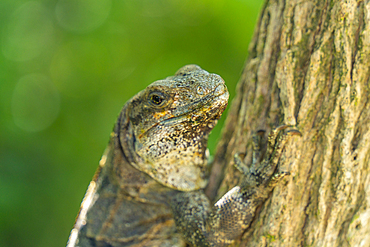
View of large iguana, Tulum, Quintana Roo, Caribbean Coast, Yucatan Peninsula, Riviera Maya, Mexico, North America
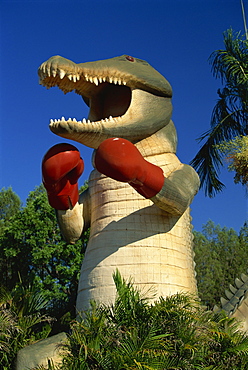
Large plastic crocodile by the Arnhem Highway at the small town of Humpty Doo, southeast of Darwin, Northern Territory, Australia, Pacific
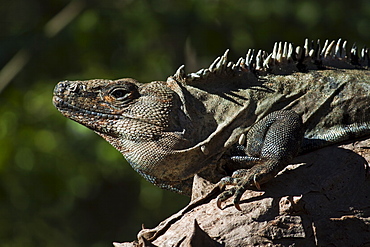
A large male Black Ctenosaur (Iguana negra) with parasitic ticks, a lizard species endemic to Central and South America, Nosara, Nicoya Peninsula, Guanacaste Province, Costa Rica, Central America
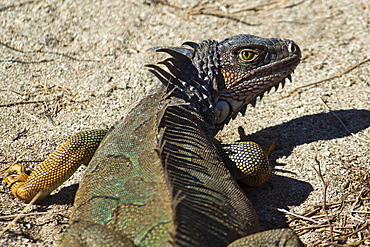
A large male Green Iguana, a lizard species endemic to Central and South America, Nosara, Nicoya Peninsula, Guanacaste Province, Costa Rica, Central America
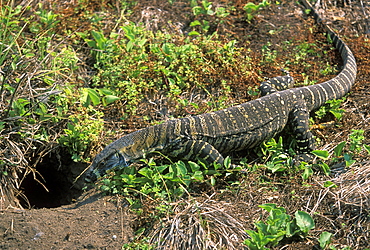
Large goanna at Pebbly Beach, well-known for its tame wildlife, Murramarang National Park, New South Wales, Australia, Pacific
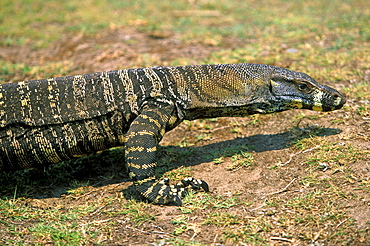
Large goanna at Pebbly Beach, well-known for its tame wildlife, Murramarang National Park, New South Wales, Australia, Pacific
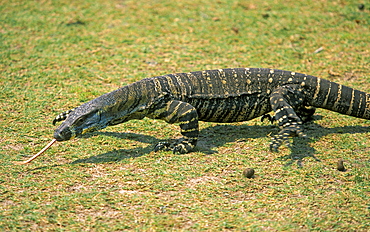
Large goanna at Pebbly Beach, well-known for its tame wildlife, Murramarang National Park, New South Wales, Australia, Pacific
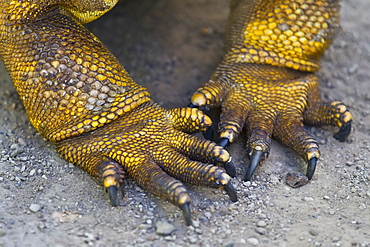
The very colorful Galapagos land iguana (Conolophus subcristatus) in the Galapagos Island Archipelago, Ecuador. MORE INFO This large land iguana is endemic to the Galapagos Islands.

The very colorful Galapagos land iguana (Conolophus subcristatus) in the Galapagos Island Archipelago, Ecuador. MORE INFO This large land iguana is endemic to the Galapagos Islands.
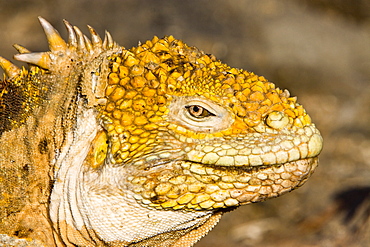
The very colorful Galapagos land iguana (Conolophus subcristatus) in the Galapagos Island Archipeligo, Ecuador. This large land iguana is endemic to the Galapagos Islands.
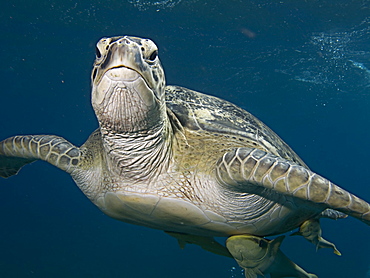
Large Green Turtle (Chelonia mydas) grazing on the seagrass beds of Marsa Abu Dabab. These pristine seagrass beds attract herds of grazing green turtles. Marsa Abu Dabab, Marsa Alaam, Red Sea, Egypt.
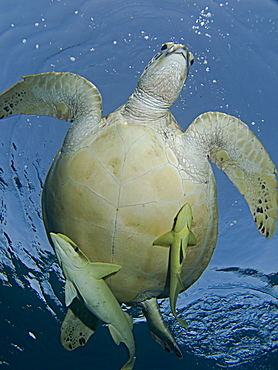
Large Green Turtle (Chelonia mydas) grazing on the seagrass beds of Marsa Abu Dabab. These pristine seagrass beds attract herds of grazing green turtles. Marsa Abu Dabab, Marsa Alaam, Red Sea, Egypt.
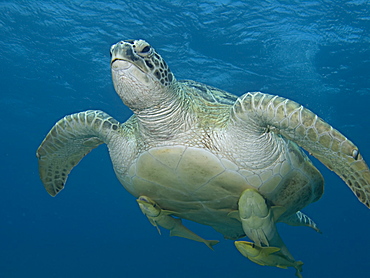
Large Green Turtle (Chelonia mydas) grazing on the seagrass beds of Marsa Abu Dabab. These pristine seagrass beds attract herds of grazing green turtles. Marsa Abu Dabab, Marsa Alaam, Red Sea, Egypt.
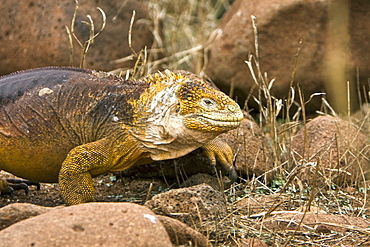
The very colorful Galapagos land iguana (Conolophus subcristatus) in the Galapagos Island Archipeligo, Ecuador. This large land iguana is endemic to the Galapagos Islands.
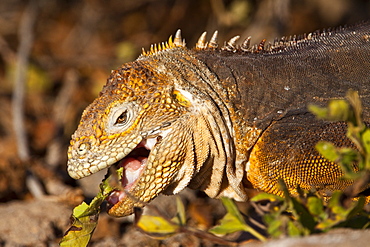
The very colorful Galapagos land iguana (Conolophus subcristatus) in the Galapagos Island Archipeligo, Ecuador. MORE INFO: This large land iguana is endemic to the Galapagos Islands.
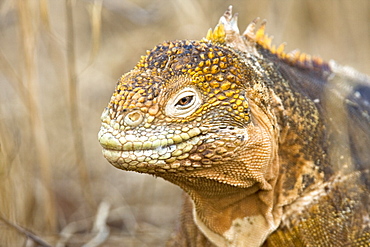
The very colorful Galapagos land iguana (Conolophus subcristatus) in the Galapagos Island Archipeligo, Ecuador. This large land iguana is endemic to the Galapagos Islands.
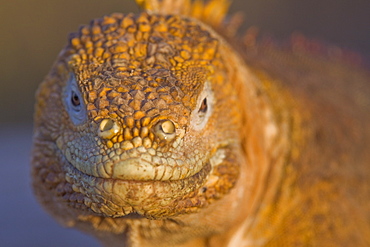
The very colorful Galapagos land iguana (Conolophus subcristatus) in the Galapagos Island Archipeligo, Ecuador. This large land iguana is endemic to the Galapagos Islands.

The very colorful Galapagos land iguana (Conolophus subcristatus) in the Galapagos Island Archipeligo, Ecuador. This large land iguana is endemic to the Galapagos Islands.
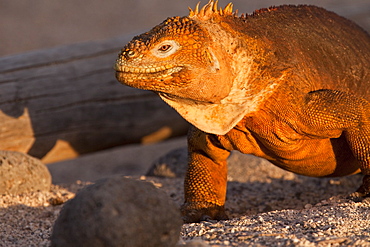
The very colorful Galapagos land iguana (Conolophus subcristatus) in the Galapagos Island Archipeligo, Ecuador. MORE INFO: This large land iguana is endemic to the Galapagos Islands.
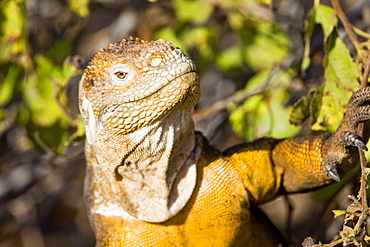
The very colorful Galapagos land iguana (Conolophus subcristatus) in the Galapagos Island Archipeligo, Ecuador. This large land iguana is endemic to the Galapagos Islands.
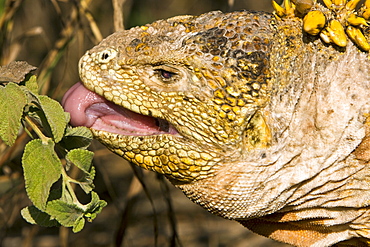
The very colorful Galapagos land iguana (Conolophus subcristatus) feeding on plants in the Galapagos Island Archipeligo, Ecuador. This large land iguana is endemic to the Galapagos Islands.
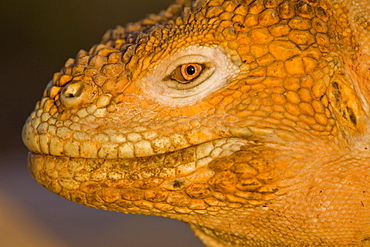
The very colorful Galapagos land iguana (Conolophus subcristatus) in the Galapagos Island Archipeligo, Ecuador. This large land iguana is endemic to the Galapagos Islands.
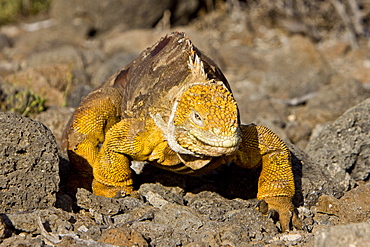
The very colorful Galapagos land iguana (Conolophus subcristatus) in the Galapagos Island Archipeligo, Ecuador. This large land iguana is endemic to the Galapagos Islands.
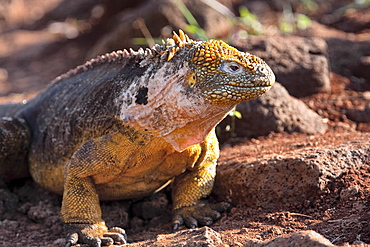
The very colorful Galapagos land iguana (Conolophus subcristatus) in the Galapagos Island Archipeligo, Ecuador. MORE INFO: This large land iguana is endemic to the Galapagos Islands.
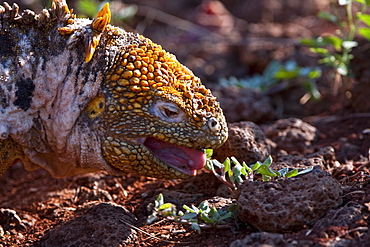
The very colorful Galapagos land iguana (Conolophus subcristatus) in the Galapagos Island Archipeligo, Ecuador. MORE INFO: This large land iguana is endemic to the Galapagos Islands.
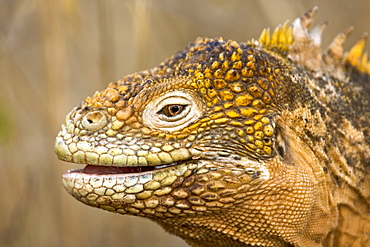
The very colorful Galapagos land iguana (Conolophus subcristatus) in the Galapagos Island Archipeligo, Ecuador. This large land iguana is endemic to the Galapagos Islands.
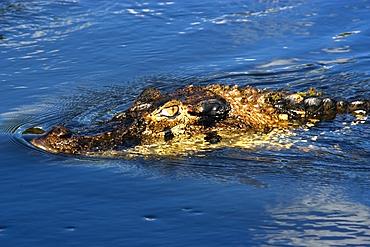
Black caiman, Melanosuchus niger, lurks in the water, Mamiraua sustainable development reserve, Amazonas, Brazil
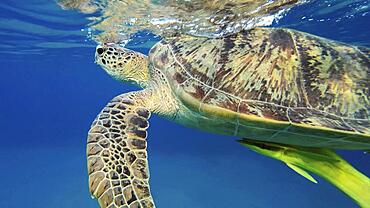
Bottom view of Great Green Sea Turtle (Chelonia mydas) is resting on surface of water, Red sea, Egypt, Africa
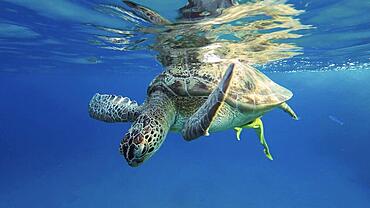
Great Green Sea Turtle (Chelonia mydas) is resting on surface of water and looks at down, Red sea, Egypt, Africa
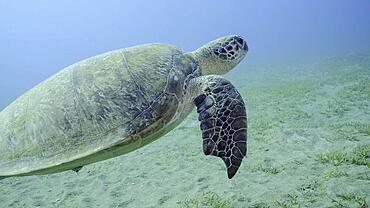
Sea Turtle with bite marks on fins swims in blue water. Close-up of Great Green Sea Turtle (Chelonia mydas) with its front flippers bitten off by a shark swimming slowly over seabed, Red sea, Egypt, Africa

Wide-angle shot of Sea turtle grazing on the seaseabed, slow motion. Great Green Sea Turtle (Chelonia mydas) eating green algae on seagrass meadow, Red sea, Egypt, Africa

Portrait of Sea turtle grazing on the seaseabed, slow motion. Great Green Sea Turtle (Chelonia mydas) eating green algae on seagrass meadow, Red sea, Egypt, Africa

Old Red-footed Tortoise (Geochelone carbonaria) with young, Boqueron, Gran Chaco, Paraguay, South America
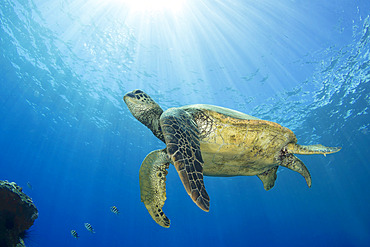
Hawaiian Green sea turtle (Chelonia mydas) swimming close to the surface with sunburst; Maui, Hawaii, United States of America
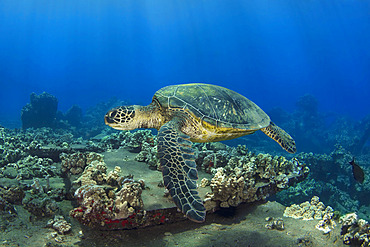
Hawaiian Green sea turtle (Chelonia mydas) swimming over the coral on the sea floor; Maui, Hawaii, United States of America
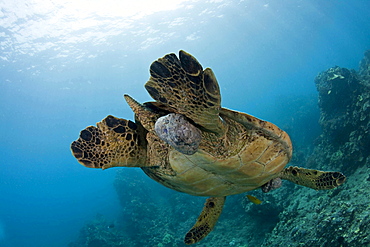
green turtle or green sea turtle This green sea turtle Chelonia mydas has large fibropapilloma tumours on various parts of it's body Soon the tumours will grow to cover both eyes and limit the turtles ability to locate a food source Hawaii
